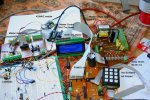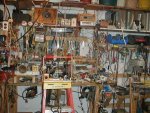Everything that Hippy + Dippy + BB + BCJ + Dr.A + Manuka + Andrew + Peter + JGlenn and all the other gurus have said actually showed up. It's a HOSTILE environment there and one needs to design for it. The first unit worked fine but was prone to damage from spikes etc. There is an electric fence energiser in close proximity and the 220V AC pans out to be 243-251 V AC !, so....
Digital inputs and outputs : How best to protect them ?
1.
+5V signal-->R-->C--0V ?
2.
+5V signal-->4N28/35 opto-->28x1 pin ?
The analogue signals from the LM35DZ's seems quite OK as I have followed the datasheet and de-coupled the +5V supply as well as R-->C-->0V from the signal line. This seems to work fine with 100nF caps.
Please may I have your suggestions and thoughts.
Digital inputs and outputs : How best to protect them ?
1.
+5V signal-->R-->C--0V ?
2.
+5V signal-->4N28/35 opto-->28x1 pin ?
The analogue signals from the LM35DZ's seems quite OK as I have followed the datasheet and de-coupled the +5V supply as well as R-->C-->0V from the signal line. This seems to work fine with 100nF caps.
Please may I have your suggestions and thoughts.


